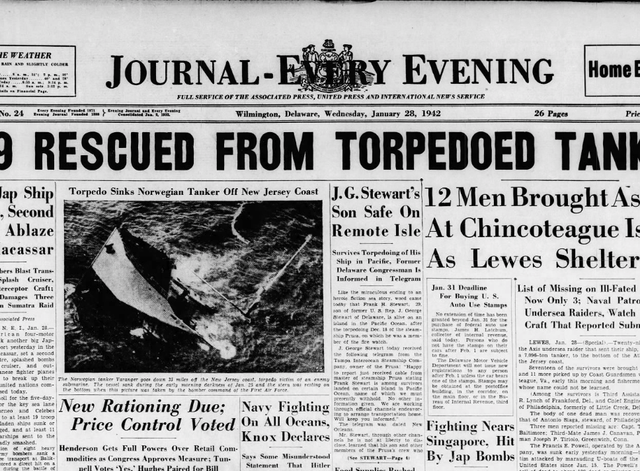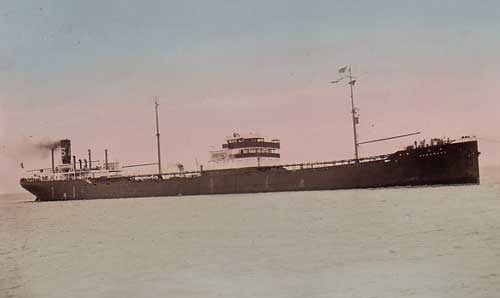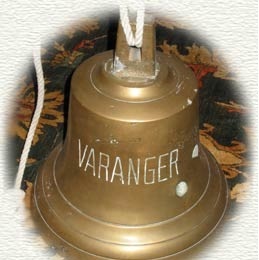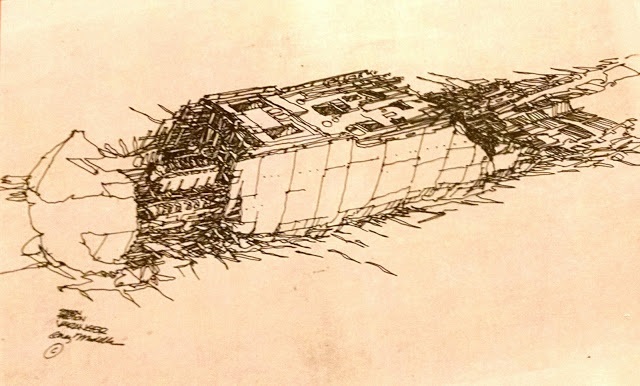
By DONALD WITTKOWSKI
A record of the voyages made by the Norwegian tanker Varanger during World War II ends abruptly on Jan. 25, 1942.
It notes that the ship set out from the Caribbean island of Curacao on Jan. 16 en route to New York while carrying 750 tons of fuel oil.
In just three words emphasized by capital letters, the ship’s record, posted on the website, warsailors.com, describes the Varanger’s horrifying fate: TORPEDOED 25/1/42. VESSEL SUBMERGED 25.1.42.”
The Varanger was among many ships victimized by German submarine attacks just off the East Coast of the United States during the early part of the war – before the U.S. Navy developed countermeasures to hunt down the Nazi U-boats.
Although the Varanger sank after three torpedoes slammed into it, none of the 40 crew members died thanks to the heroics of three fishermen from Sea Isle City who risked their own lives while venturing into danger to save others.
On the 79th anniversary of the Varanger’s sinking, one local restaurant owner, Mike Monichetti, vividly remembers the stories that his late uncle would tell him about the wartime tragedy that catapulted Sea Isle onto the front page of newspapers in 1942.
“My uncle never thought he was a hero,” Monichetti said of John Monichetti, one of the fishermen involved in the rescue of the Varanger’s survivors.
The German sub torpedoed the Varanger 28 miles east of Wildwood. The powerful explosion shook windows in Sea Isle and could be heard as far away as Atlantic City, according to a story in the New York Times.
Three commercial fishermen from Sea Isle were out in two boats on Jan. 25 hauling in their catch. Mike Monichetti said his uncle, John, and his grandfather, Dewey Monichetti, were in one boat.
In the other fishing boat was Dominick Constantino, according to Sea Isle historian and author Joseph LaRosa Jr.
While out cod fishing, the fishermen apparently saw the fire and smoke created by the Varanger’s explosion from the torpedo blasts shortly after 10 p.m. and decided to investigate.
“They were on their way out and found the survivors,” LaRosa said.

When they arrived at the scene after the ship went down, the fishermen discovered the Varanger’s crew members piled into two lifeboats, many of them covered in fuel oil.
The fishermen towed the lifeboats back to Sea Isle. According to newspaper accounts and other reports, the survivors were taken to the U.S. Coast Guard station and St. Joseph Catholic Church.
“They brought them back to the church, where they were given clean clothes and a meal,” LaRosa said.
Mike Monichetti said the survivors also came ashore at 43rd Street and Park Road, where his bayfront restaurant, Mike’s Seafood & Dock Restaurant, now stands.
“They unloaded the survivors here on the dock. The first time these guys hit American soil was at where Mike’s Seafood is now at 43rd Street,” Monichetti said.
Monichetti noted that his grandmother, Rosina Monichetti, cooked a meal for the crew members.
Mike Monichetti is the third generation of the Monichetti family to own the seafood restaurant, following his grandfather, Dewey, and his father, Michael Sr., in the business.
Monichetti said he and his uncle talked about the Varanger’s sinking “all of the time.” Prior to the attack, Monichetti’s grandfather had spotted two German submarines looming off the Sea Isle coast.
“My grandfather told the Coast Guard that there were German submarines out there. He saw them side by side,” Monichetti said.
After the attack, the Varanger’s crew members apparently didn’t stay in Sea Isle for long. They slept in the basement at St. Joseph Catholic Church before U.S. immigration officials arrived in town the next day to take care of them, LaRosa said.
“As far as I know, they disappeared,” he said.

The Varanger’s sinking occurred before the 67-year-old LaRosa was born, but he remembers people in Sea Isle talking about the ship when he was growing up.
LaRosa, the author of two books chronicling the devastation of the monstrous March 1962 storm on Sea Isle, comes from a well-known local family.
His late father, Joseph LaRosa Sr., was a local commercial fisherman who entered military service during World War II. His father’s military uniform and the bridal gown worn by his late mother, Alice LaRosa, are part of a display at the Sea Isle City Historical Museum.
Monichetti’s uncle also entered the service during the war and was a tank mechanic for the famed U.S. Gen. George S. Patton. Monichetti believes that his uncle was so angered by the Varanger’s sinking that he decided to join the military to fight the Germans.
The involvement of Dewey and John Monichetti and Dominick Constantino in rescuing the Varanger’s survivors was chronicled in newspaper accounts around the world. However, there apparently was no great fanfare for the three men in Sea Isle, LaRosa said.
“It was never played up heroically, nor were they given a ticker-tape parade,” he said.
During the early months of the war, the Varanger was one of 82 ships lost in U-boat attacks off the East Coast, according to the New York Times.
“New Jersey stood at the midpoint of the U-boat attack, and much of the carnage occurred off its coast,” the newspaper said.
The Varanger, of course, was part of the carnage. Seventy-nine years later, its shattered remains can be found in 140 feet of water off the Jersey Coast.
The wreck is a popular dive spot and many of its artifacts have been recovered over the years, including the ship’s bell, according to warsailors.com.








